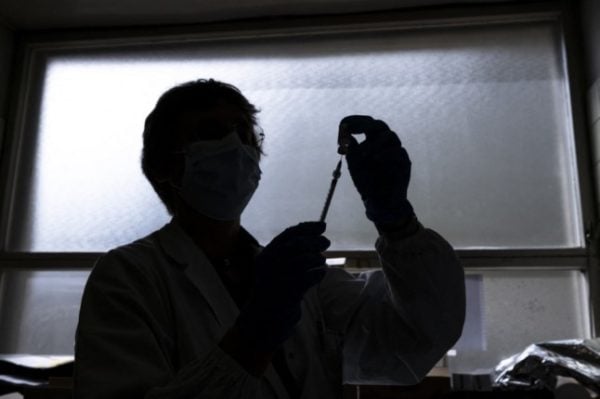“Fifty-three factories are producing vaccines in the EU. Our continent is now the largest producer in the world after the United States,” internal markets commissioner Thierry Breton told French daily Le Figaro in an interview.
“I am now certain of how many doses are currently in production and I know how many millions will be delivered each week,” he said.
“This allows me to assure you that we will have by mid-July the number of doses necessary for vaccinating 70 percent of the European Union’s adult population,” he said, citing the threshold many health experts say is necessary to achieve “herd immunity.”
EU governments have faced fierce criticism over the bloc’s joint vaccine procurement efforts, which saw a slow start to its inoculation drive even as programmes raced ahead in Britain and the US.
Already half of American adults have had at least one dose, and as of Monday anyone over 18 can sign up for a shot.
In the EU, by contrast, just over 20 percent of adults have received at least one jab, according to the European Centre for Disease Prevention and Control.
Breton insisted that Europe would catch up in the coming months, with production capacity “that will reach 200 million doses a month by this summer.”
But he poured cold water on the idea of using Russia’s Sputnik V vaccine anytime soon, after Germany opened discussions with Moscow this month without waiting for coordinated EU action.
The European Medicines Agency (EMA) is evaluating Sputnik’s safety and efficiency, but “it still lacks some essential data,” Breton said.
And even if approved, “we’ll have to find production capacity, because the Russians do not have large production sites and are looking for industrial partners in Europe which are already fully mobilised.”
“For all these reasons, I don’t think significant quantities of Sputnik will be available for Europe before the end of 2021,” he said.




 Please whitelist us to continue reading.
Please whitelist us to continue reading.
Hi,
I would like to warn you about the wrong istatistic in the article.
According to Folkhälsomyndigheten webpage, Proportion (%) vaccinated with at least 1 dose is %23.1 as of the date of 20th of April (%20.4, 16th of April) but you are sharing the data from ourworldin which is not correct(it shows %16.51 for16th of April which is %5 less than the official number)
Could you please contact ourworldin and ask them to correct the figures or please stop sharing their untrustable numbers. It’s not fair to compare countries with wrong numbers.
Thanks
Source:
(https://www.folkhalsomyndigheten.se/smittskydd-beredskap/utbrott/aktuella-utbrott/covid-19/statistik-och-analyser/statistik-over-registrerade-vaccinationer-covid-19/)
Hakan, OurWorldInData uses official data, coming exactly from Folkhälsomyndigheten (if you’re familiar with programming, you can check the source code here: https://github.com/owid/covid-19-data/blob/master/scripts/scripts/vaccinations/src/vax/batch/sweden.py).
The difference you see is because the percentage shown on Folkhälsomyndigheten’s website is based on the adult population (18+), but OurWorldInData calculates it based on the whole population of the country. It does the same calculation for all countries, exactly the same way, all coming from official and verifiable sources.